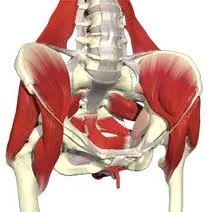I've wavered a bit of commenting, though perhaps this can be of use. Here's something to consider from a soft-tissue perspective.
A deep asana practice invites compression / decompression of almost all soft tissue, as well as the collapse / expansion of most positive space inside the body. Hence, the 'wringing of the washcloth' analogy and the understanding that this dynamic process is a principle driver of detoxification.
Soft tissue yields when it meets the harder surfaces of bone or cartilage - or implanted devices (e.g. metal plates fixing bone) - and folds around or compresses as required by our movement. The deeper the practice the greater the compressive demands.
Common sense suggests that an intrauterine device will provide some level of fixed resistance to soft tissue movement during asana practice. Depending upon material and fit, this might be debilitating.
The one client (and student) who discussed this directly had a semi-permanent implant which her doctor repeatedly resisted removing - though she had experienced long-term irritation. Significant discomfort resulted in a compromised asana practice. Her final decision was to remove the implant with a significant subsequent easing of pain.
It is understood in some forms of bodywork that removal of an intrauterine devices may be recommended before addressing the abdomen - this is to avoid abrasion and/or inflammation of internal tissue.
The reports from this client suggest to me that general awareness and caution are advised here for yoga practitioners.. There are alternate options which allow for internal organs to remain free from irritation and safe from risk.
